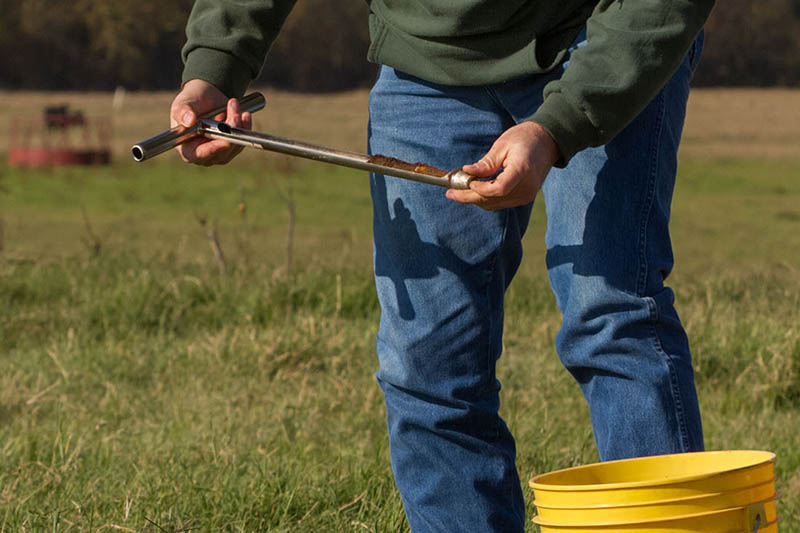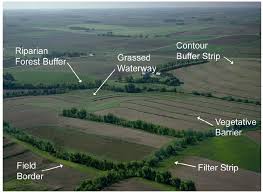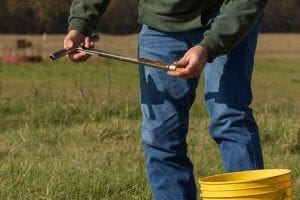For farmer Robbie Emerson, water quality is an ongoing effort that never goes out of season. A fourth-generation soybean farmer from Middletown, Delaware, Emerson knows the importance of protecting Delaware’s local watersheds.
In order to keep nutrients and pesticides from impacting local bodies of water, he implements a variety of management practices throughout the year. Over time, these practices have not only helped Emerson improve his area’s water quality, he has also improved soil health, and ultimately made his farm more sustainable in return.
Here’s a look at what practices Emerson focuses on to help protect water quality and soil health year-round.
In-season: Keep inputs where they belong
 Create a buffer
Create a buffer
During the growing season, Emerson uses tactics like buffer strips to trap soil and slow runoff into waterways. This provides him with the peace of mind that those waterways won’t be in danger if chemicals or fertilizers did find their way out of the field.
“We maintain our buffer areas and filter strips between the fields and the waterways to protect water quality,” Emerson says. “I feel better at the end of the day knowing that if something does escape from the field, it’s not going far.”
Apply with care
For pesticides, Emerson uses products with low toxicity levels to avoid contaminating the water supply in case runoff does occur.
“We make sure that our chemistries are on the low-toxicity spectrum so we don’t hurt the fish and wildlife,” Emerson says. “We always want to use products that are not going to harm anything outside of our growing area.”
Off-season: Water quality doesn’t stop with the crop
Two heads — or three or four — are better than one
For Emerson, protecting water quality begins in the winter. He seeks out the advice of three or four trusted consultants to provide him with information that he can use to make decisions for his farm. This is the time when Emerson studies current state regulations for product use. He uses the advice of the consultants and the state requirements to build out his plan for the season.
 Soil health and water quality: two of a kind
Soil health and water quality: two of a kind
Proper soil management not only increases soil health but also goes hand in hand with water quality. Emerson takes soil samples yearly and scouts the land to locate problem areas. He then combines the recommendations he received over the winter with the results from his soil samples to create his nutrient plan. Incorporating data from multiple sources helps ensure he’s not over-applying nutrients and risking the chance of runoff.
Cover up, build up, use up
During the off-season when soybeans are not in the ground, Emerson says cover crops like wheat barley, radishes and wheat/clover mixes build organic matter and use up any excess nutrients that remain in the ground. These crops also keep the soil in place to help reduce sediment runoff into local watersheds.
Reduced tillage for reduced soil movement
A majority of Emerson’s ground has also been on continuous no-till for several years, keeping the soil in place and not in the surrounding waterways. No-till also helps increase organic matter, which works to build up nutrients in the soil.
Clean water and healthy soils: A win for all
 Overall, Emerson says he does all he can to keep waterways clean and soil healthy. He works diligently to make sure that everyone and everything in the surrounding areas is safe.
Overall, Emerson says he does all he can to keep waterways clean and soil healthy. He works diligently to make sure that everyone and everything in the surrounding areas is safe.
“Soil health is very important. Water quality is very important,” Emerson says. “While producing a quality crop is always on the top of our minds, we also work to keep water clean and the soil healthy.”
Emerson continues implementing sustainable practices on his farm each year to meet this goal. He encourages other Delaware farmers to consider which practices might work for their farm to help improve water quality in their area.




